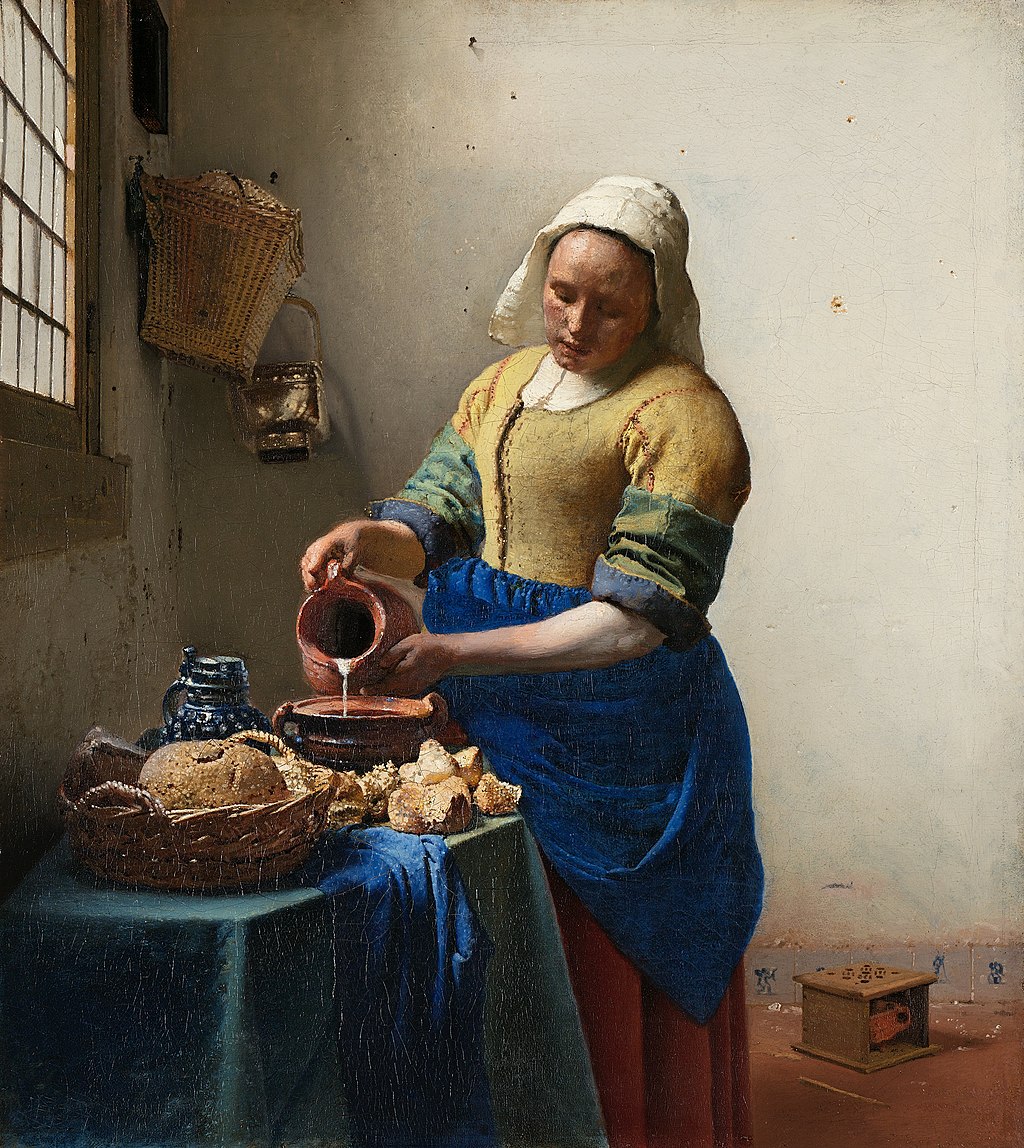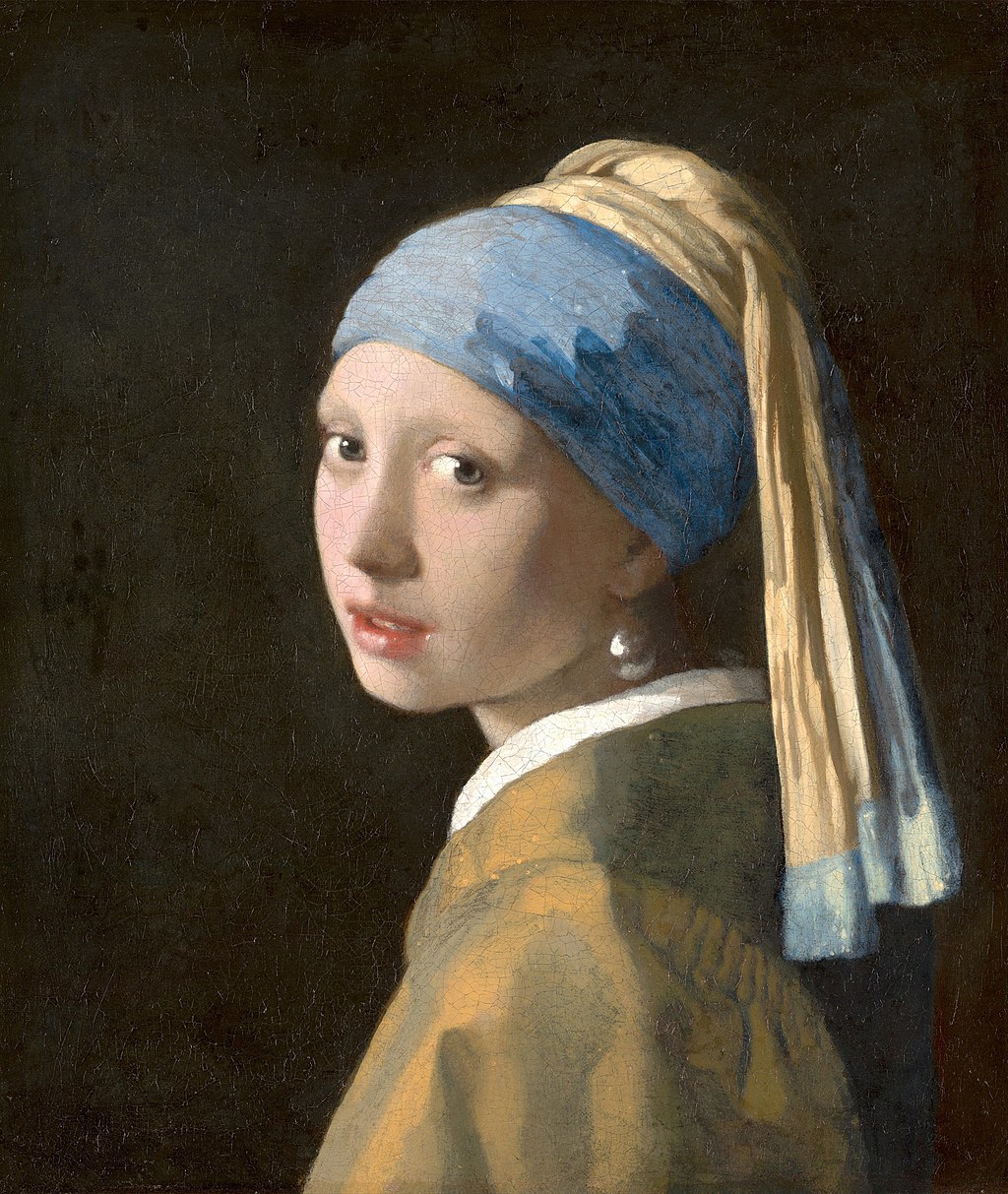
Vermeer makes the buzz

This month, Beaux Arts Magazine is teasing. By devoting its cover and a beautiful illustrated dossier to the Vermeer exhibition that will be held in Amsterdam from 10 February to 4 June, the art magazine gives us the full measure of the event, without however confiding in us its feelings about the Rijksmuseum's display, since it has not yet been unveiled to the press at the time of writing. In any case, there is no doubt: this is a great incentive to come! If only because a record has been broken: 28 of the 34 paintings now officially attributed worldwide to Johannes Vermeer (1632-1675) will be brought together in one place through exceptional loans. There were 22 in the exhibition at the Mauritshuis in The Hague in 1996, and 12 at the Louvre in 2017. The feat is therefore a media one. But since Nestlé adopted his Laitière to install it on the refrigerated shelf in the early 1970s, has Vermeer not become a marketing champion?
He whose weaver father offered paintings for sale as well as carpets in his Delft inn in the 17th century, and who was in debt all his life in order to feed his eleven or fifteen children, until he died ruined at the age of 43, would surely not have disdained this phenomenal fame. It is inevitably profitable today for others than him. And deservedly so. For the rarity of his works of art for sale and the mystery surrounding his life and his painting are not the only explanations for his international popular success. The formal perfection and psychological intensity of his compositions are enough to make one bow to his paintings. Not to mention the fact that the sweep he gave to religious and historical painting in the middle of the 17th century was a great relief! With his intimate genre scenes, Johannes Vermeer clearly did not become one of the greatest masters of the Dutch Golden Age for nothing, on a par with Rembrandt and Frans Hals.
Probably because a rich Delft collector systematically bought them, the two or three paintings that Vermeer painted each year took a long time to find their place in the world. After about a century and a half of oblivion, the man who would henceforth be nicknamed the "Sphinx of Delft", so shrouded in mystery was brought back to light in the 1860s by the French art critic Etienne-Joseph Théophile Thoré (1807-1869). An ardent republican activist who had been forced into exile in 1849, the journalist and art historian had been captivated by the View of Delft discovered in The Hague during his wanderings through foreign museums. So was La Ruelle. The only two landscapes in Vermeer's known body of work. So he set out to find all the paintings possibly by Vermeer, putting all his expertise into rediscovering the Delft master, and signing numerous articles to his glory, under his pen name, William Bürger.
"Starting with the View of Delft, the expert brought out his first works and the movement continued in the following decades, which saw several paintings hitherto attributed to Pieter de Hooch or Gabriel Metsu being returned to him," notes Daphné Bétard in her article for Beaux Arts Magazine. For the art market has quickly had to be wary of clever little people ready to do anything to get a better price for their unidentified paintings for sale. "In addition to the deception of Han van Meegeren, who was arrested in June 1945 for painting six fake Vermeers and duping leading art historians, some authentications are still being debated. Recently, the National Gallery of Art in Washington de-attributed a painting from its collection, Girl with a Flute, reducing the total body of his painted work from 35 to 34 paintings. The Girl with a Red Hat, also in Washington, which is very similar in style, is also in doubt. As for the Saint Praxedes, sold as an early work for £6.2m - a relatively small sum due to the doubts it raises - and the Young Woman Seated with a Virginal, both in private hands, they are far from being unanimously approved by specialists.
Nevertheless. "Ever since I saw the View of Delft in the Hague Museum, I knew I had seen the most beautiful painting in the world," wrote Marcel Proust in 1921. "In Swann's Way, I couldn't help having Swann work on a study of Vermeer. Decidedly, with this famous landscape showing the port of Delft and the city, in the background, with its fortifications, the small Kethel gate and the large Schiedam gate surmounted by a bell tower (in the centre), as well as the Rotterdam gate with its two towers (on the right), in the shadow of the dark cloud that flies over the city, painted in oils in 1660 or 1661, Johannes Vermeer hit the nail on the head. In addition to his Milkmaid, painted around 1658 and now associated with an advertising brand for yoghurts and other dairy desserts, we should of course also mention the Girl with a Pearl, among other stars among Vermeer's masterpieces. The painting was recently targeted by environmental activists.
|
Laitière de Vermeer |
Jeune Fille à la perle de Vermeer |
"People flock from all over the world to see the beautiful painting in The Hague, in the Netherlands, they parade in front of it, they elbow each other to take selfies and photos," says the journalist from Beaux Arts Magazine about Johannes Vermeer's Girl with a Pearl. "In 1999, she even inspired a best-seller by the novelist Tracy Chevalier, which was later adapted for the cinema, where she is played by the Hollywood actress Scarlett Johansson. Nicknamed "The Mona Lisa of the North", the Girl with the Pearl (...) suffers from the same illness as the Mona Lisa. So often quoted, misappropriated, reproduced in advertisements, on the front page of magazines and even in other works, that her fame, her iconic status, her inestimable value keep us at a distance, preventing the encounter from taking place.
Let us hope that despite the enormous success of the Rijksmuseum exhibition, visitors will be able to encounter Vermeer's works. Such as The Girl Reading a Letter in Front of an Open Window (1657-1658), from the Old Masters Picture Gallery in Dresden, recently restored and shown for the first time in the Netherlands, or The Girl Interrupted in her Music (1659-1661), The Officer and the Laughing Girl (1657-1658) and The Mistress and the Maid (1665-1667), the three precious paintings from the Frick Collection in New York, which will be shown together for the first time outside New York since they were acquired over a century ago.







































































